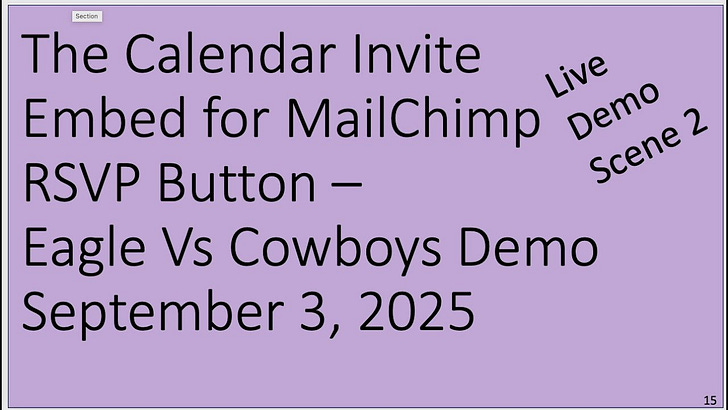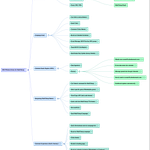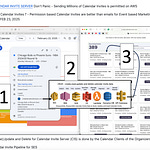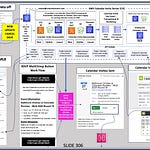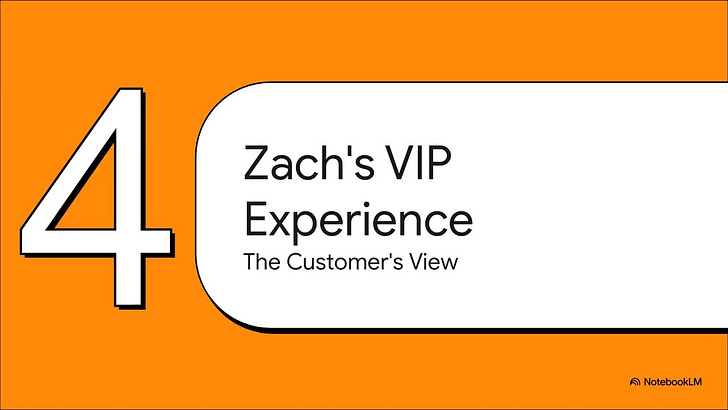Introduction: The Unseen Power in Your Calendar
For any event marketer, the biggest challenge isn't just getting people to sign up—it's ensuring they actually attend. We send confirmation emails, reminders, and follow-ups, all fighting for attention in a crowded inbox. But what if the most powerful tool for driving attendance has been hiding in plain sight all along?
The standard, often-overlooked calendar invitation holds a surprising amount of untapped potential. When integrated intelligently into an email campaign, it transforms from a simple reminder into a dynamic marketing channel. This post will reveal four impactful ways this technology is changing the game for marketers, based on a deep dive into the workflow of the Calendar Snack service.
1. Your Marketing Workflow Starts in Your Personal Calendar
Counter-intuitively, this robust marketing process doesn't begin in a new, complex platform. It starts right in the organizer's personal Google or Outlook calendar. Instead of logging into another dashboard, the organizer creates, updates, or cancels the event in the calendar they already use every day.
This 'in-workflow' approach is critical. By integrating with the native calendar client, the system eliminates the need for user retraining and avoids the platform fatigue that often plagues many new marketing technology (martech) additions. The core process is reduced to a single email to an API endpoint (create@calendarsnack.com), a model of efficient integration. Once sent, the service automatically receives the event, disassembles the calendar invitation on your behalf, and stores it for later recall for your campaign's RSVP button.
2. A Single Calendar Edit Pushes to Every Attendee, Automatically
Imagine you need to add a last-minute promotion or update event details. Traditionally, this means another email blast and hoping everyone sees it. With an integrated calendar system, the process is automated. In the workflow we analyzed, an organizer named "Greg Hansen" opened his original calendar event, added a promotion to the description, and hit "Save."
This single action automatically triggered an updated calendar invitation to be sent to every person who had already RSVP'd. An attendee, "Zach," immediately received an email notifying him of the "updated" event, and the new information was auto-populated within his existing calendar entry. For marketers, this feature is a game-changer. It guarantees brand consistency and prevents the nightmare scenario of attendees showing up with outdated location details or missing a crucial 'last chance to buy' promotion—all without clogging their inboxes with yet another "Update" email.
3. The Calendar Is a Two-Way Data Channel, Not Just a Reminder
When an attendee clicks the RSVP button—essentially a call to the platform's API—the system does more than send an .ics file. It initiates a tracking connection between the platform and that individual's calendar. As soon as attendee Zach clicked the button, the Calendar Snack dashboard began collecting granular data on his RSVP status, noting his initial response of "maybe" and attributing it directly to the Mailchimp campaign source.
Crucially, this connection persists. If Zach later goes into his own calendar and changes his status, the system tracks that change and updates the organizer's dashboard in real-time. This transforms the calendar from a passive reminder into an active listening tool, providing marketers with real-time intent data that can be used to forecast attendance with greater accuracy, trigger targeted follow-up campaigns for 'Maybe' RSVPs, or even inform sales teams about highly engaged prospects.
4. The Attendee Experience is Seamless and Smart
From the recipient's perspective, the process is frictionless. In the demonstration, the attendee Zach clicks a simple RSVP button embedded in a Mailchimp email. He is immediately taken to a clean redirect page that provides immediate, personalized feedback: "Zack@techvader.com has been sent the calendar invite." This simple confirmation removes ambiguity and assures the user that the action was successful.
This redirect page also presents a strategic opportunity. If the organizer has other events loaded in their data set, this page can be configured to showcase them, turning a basic confirmation step into a cross-promotional touchpoint. By making it incredibly easy for users to add events to their calendars, this workflow increases the likelihood of a successful RSVP. It provides a natural path for them to discover more of your offerings.
"...we're all about getting on the calendar first and then working backwards with communications and promotions..."
Conclusion: Re-thinking Your Most Underused Asset
The calendar is no longer a passive utility for scheduling meetings. When connected to your marketing automation platforms, it becomes an active, intelligent, and integrated part of your toolkit. It streamlines workflows for organizers, provides a frictionless experience for attendees, and opens up a powerful new channel for data collection and communication.
As communication channels get more crowded and fighting for inbox attention becomes harder, what if the most direct line to your audience has been hiding in your calendar app all along?




